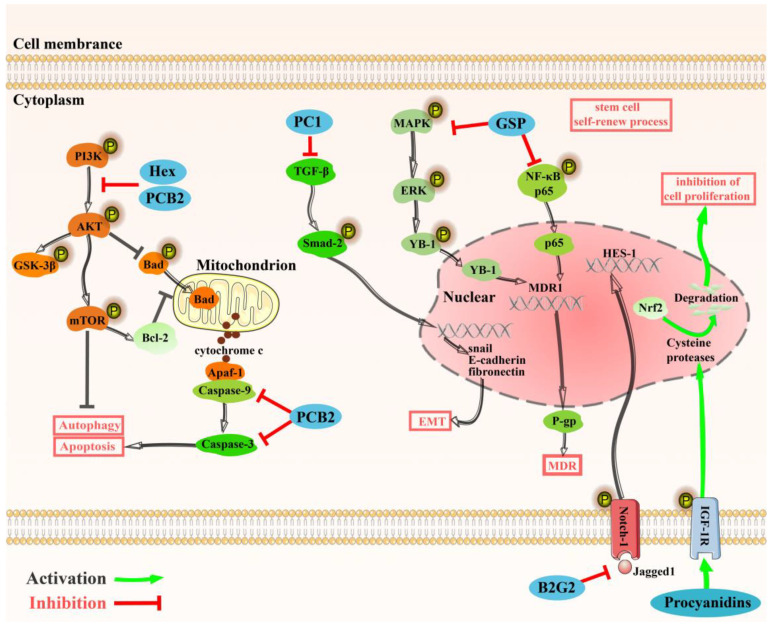Figure 3.
The antineoplastic mechanism of procyanidins. Notes: (1). Procyanidins can inhibit cell proliferation by phosphorylated IGF-1R, which can activate cysteine proteases and accelerate the degradation of activated Nrf2. (2). B2G2 can inhibit stem cell self-renew process through inhibiting the activitation of Notch1 pathway. (3). GSP can reverse MDR by suppressing both MAPK/ERK/YB-1 and NF-κB p65 pathway. (4). PC1 inhibits EMT by inhibiting TGF-β-induced phosphorylation of Smad-2, and further down-regulates Snail, E-cadherin and fibronectin. (5). HEX can inhibit PI3K/Akt/GSK-3β and PI3K/Akt/Bad signaling pathways, and induce the mitochondrial apoptosis pathway of cancer cells. In addition, PCB2 also plays an anti-proliferative role and stimulates apoptosis, induces autophagy of cancer cells through the Akt/mTOR pathway. Abbreviation: IGF-1R, insulin-like growth factor 1 receptor; B2G2, B2 3;3″-di-O-gallate; MDR, multidrug resistance; GSP, grape seed procyanidins; P-gp, p-glycoprotein; YB-1, Y-box binding protein 1; EMT, Epithelial-to-mesenchymal transition; PC1, procyanidin C1; Hex, hexamer; Bcl-2, B-cell lymphoma-2.

